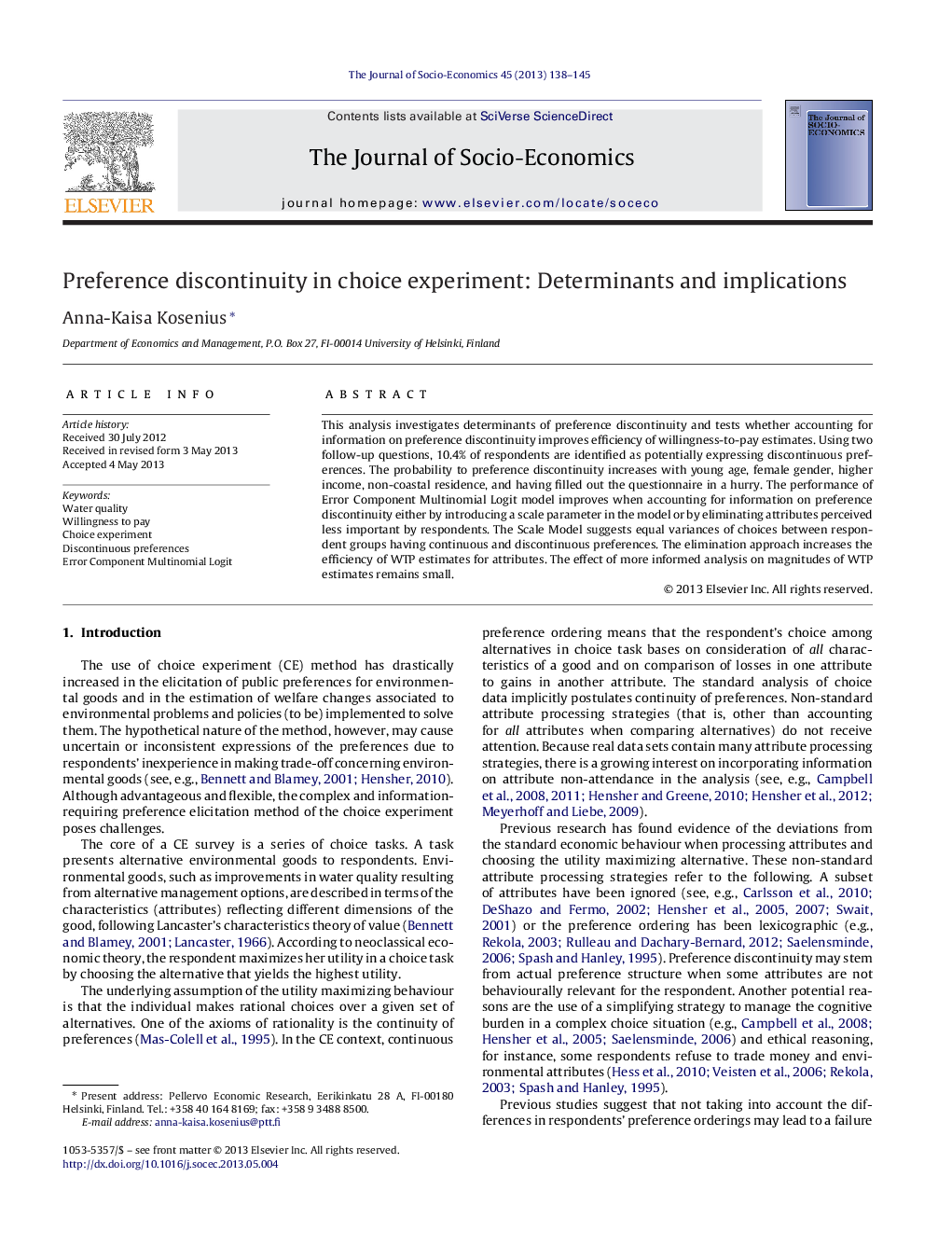| Article ID | Journal | Published Year | Pages | File Type |
|---|---|---|---|---|
| 970627 | The Journal of Socio-Economics | 2013 | 8 Pages |
•This paper analyses preference discontinuity: determinants and effect on magnitude and efficiency of benefit estimates.•Probability to have discontinuous preferences increases with young age, female gender, higher income, and non-coastal residence.•Also being in a hurry when filling out the questionnaire is positively correlated with discontinuity.•Effect of accounting for preference discontinuity on magnitude of estimates is small.•Efficiency of estimates improves when less important attributes for respondents are excluded from analysis.
This analysis investigates determinants of preference discontinuity and tests whether accounting for information on preference discontinuity improves efficiency of willingness-to-pay estimates. Using two follow-up questions, 10.4% of respondents are identified as potentially expressing discontinuous preferences. The probability to preference discontinuity increases with young age, female gender, higher income, non-coastal residence, and having filled out the questionnaire in a hurry. The performance of Error Component Multinomial Logit model improves when accounting for information on preference discontinuity either by introducing a scale parameter in the model or by eliminating attributes perceived less important by respondents. The Scale Model suggests equal variances of choices between respondent groups having continuous and discontinuous preferences. The elimination approach increases the efficiency of WTP estimates for attributes. The effect of more informed analysis on magnitudes of WTP estimates remains small.
